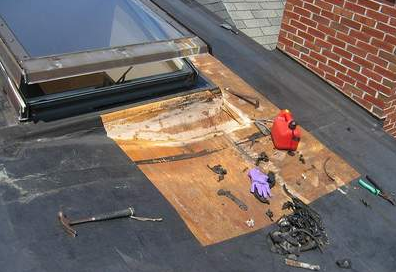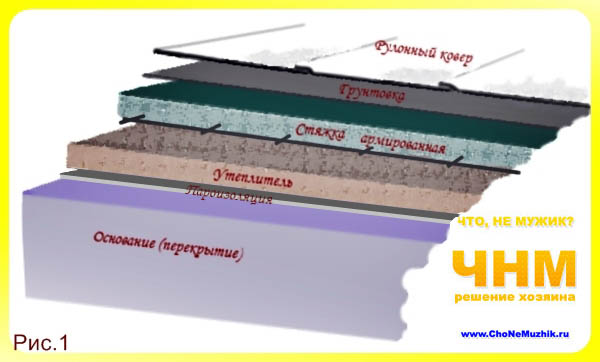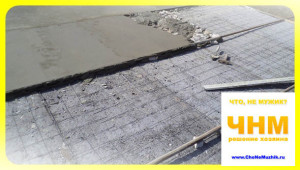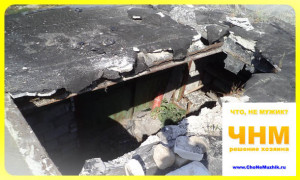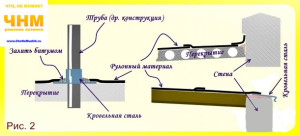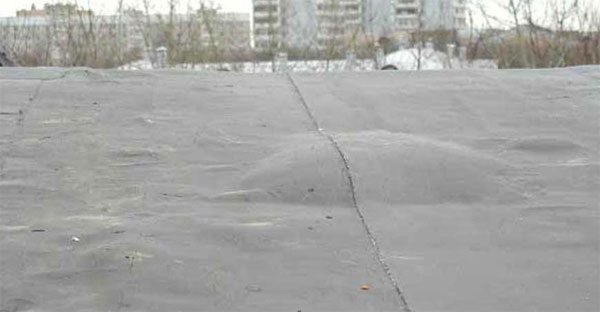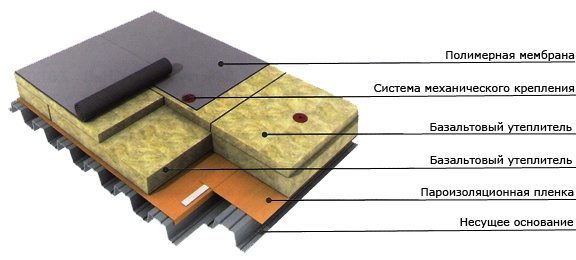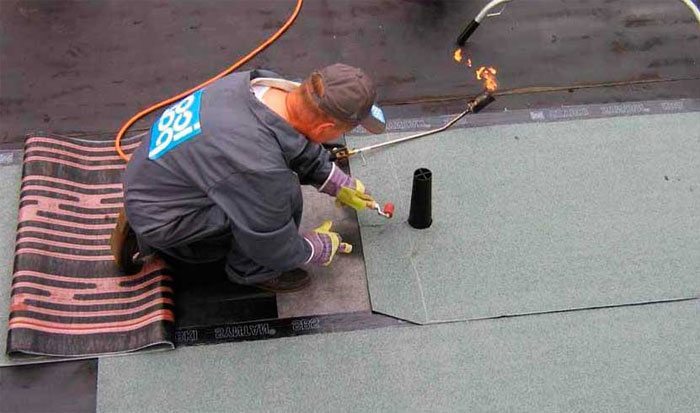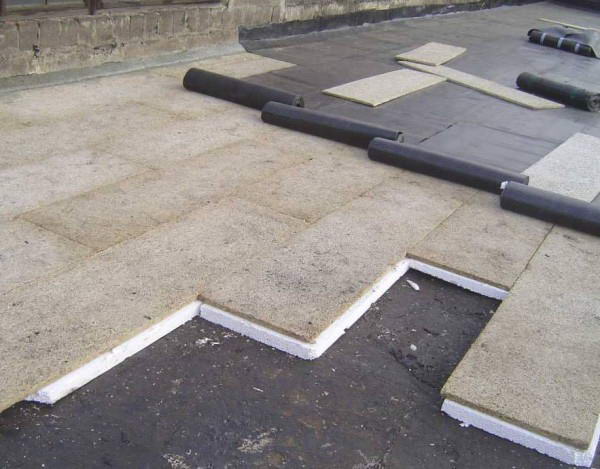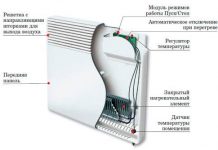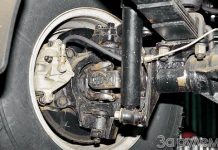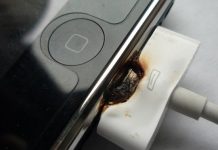In detail: do-it-yourself flat roof repair with roll materials from a real master for the site my.housecope.com.
D Let's face the sad truth - the repair of a soft roof, flat, roofing made of roll materials is required much more often than we would like. But it's not that bad! If you carry out this repair according to the requirements of the technology, it will last at least ten to twelve years, or even longer. Here we will consider how to repair a soft, roll or flat roof, the most common damage, methods of their elimination. We also learn about the destructive factors leading to damage to the coating.
First, you need to understand what a soft, roll roofing is and what it is, in order to determine the nature of the damage and the necessary measures for repair. A soft roof (it is also a flat or a roof made of roll materials) is so called because a layer of flexible, "soft" materials produced in the form of rolls serves as protection against moisture. They represent a base made of cardboard, fiberglass, fabric, on top of which a layer of bitumen is applied.
The name "flat" such a roof was given due to small slopes (3-5%), in contrast to pitched roofs, from sheet and piece materials. More information about roofing can be found here.
The main methods of installing roll roofing are:
1. gluing on bituminous mastic;
2. fusing with a gas torch or other device that creates a high-temperature air stream.
1. Base. Floor structures serve as the basis. These can be reinforced concrete slabs (panels), wood or metal flooring.
2. Vapor barrier. It settles in the presence of insulation. The task of vapor barrier is to protect the insulation from vaporous moisture.
| Video (click to play). |
3. Insulation. Filling, rigid insulation materials (expanded clay crushed stone, furnace or blast-furnace slag; foam-aerated concrete) are more often used, less often slabs made of hard mineral slabs. With this layer, the required roof slope is often arranged.
4. Screed. Creates a hard, even "shell" over the insulation, for gluing the actual roll carpet. It is made of cement-sand mortar grade 120-150. To increase the strength, the screed is often reinforced with a wire mesh having cells of 100x100, 150x150 mm from a smooth wire of 2.5-3 mm.
5. Primer. Serves to increase the adhesion of the cement screed. It is made from bitumen and solvents. The primer can be made by yourself by mixing molten bitumen with diesel fuel in a ratio of 1: 3. Instead of diesel fuel, inexpensive oil is used to reduce the cost. For example, transformer, "axial", waste motor. A bituminous primer is also known as a primer.
6. Roll carpet, roll roofing.
There are a great variety of technical and trade names of roll materials. They are divided into two groups: basic and non-basic. The first ones are made by covering the base (cardboard, asbestos cardboard, fiberglass) with bitumen with various additives.
The need to repair the foundation may be caused by force majeure circumstances (earthquakes, the impact of any explosions, impacts). Often, the ceiling structures of an abandoned building, where the roof has been leaking for a long time, are destroyed.The need for repairs is obvious here: the overlap has subsided, collapsed, gaping holes. Major repairs are already needed here, even the restoration of the roof.
The vapor barrier, protected by a layer of insulation, rarely deteriorates. As a rule, simultaneously with the destruction of the floor.
Damage to the insulation layer is often caused by mechanical stress. Installation or repair of structures located on top of the roofing layer (for example, a brick chimney, parapets). Often, water entering through damage to the roof washes away particles of bulk insulation.
Such destruction is noticeable even with a superficial examination - by sagging roof sections. In addition, underfoot roofing is provided when stepped on. When tapping, voids are heard.
A screed, especially an unreinforced one made from a low grade mortar, breaks down almost simultaneously with a rolled carpet. However, making repairs to the soft roof with your own hands, removing the destroyed old carpet, the poor-quality screed also collapses.
A common cause of roof destruction (seemingly frivolous, but very sad consequences) is plants.
A spreading weed, or even a real tree, which turns green over the roof, looks funny! Alas, the consequences of this botanical curiosity for the roof are catastrophic! The reason is simple: a seed caught in an invisible crack, a small shell, or even between crumbs of protective dressing. Over time, releasing the roots, it literally breaks the screed, tearing the roofing material, opening the way for water.
Finally, the roll cover itself. As already mentioned, the first sign of its malfunction is the wetting of the ceiling. However, it is almost impossible to determine the exact place where the damage is. A rolled carpet five or seven years old looks unsightly throughout the entire area, therefore, it is impossible to determine exactly how serious the damage is in one place or another by simply examining the surface.
In addition, water, seeping between the carpet and the screed, draining in the insulation along the vapor barrier layer, overlapping voids, can manifest itself in meters (even tens of meters) from the place where it passed through the roll layer.
To dismantle the old roll carpet, various types of durable spatulas are used. You can use a regular bayonet shovel.
A more preferable option is possible when the old carpet is not removed. It is cleaned, then "melted" with a torch, creating a level base for the new coating.
The benefits of this are obvious, there is no need for a primer, the total thickness of the roof is greater, the strength is higher.
This can be done when the carpet is held firmly. Its surface is free from blisters. Of course, the underlying layers must be in good condition.
Soft roofs are often equipped with various sheet metal parts. These are the so-called "lining". Overhangs, nodes of passage through the roof of various structures (pipes, antenna racks), visors, etc., are decorated with metal.
Be sure to check the condition of the lining, how securely they are fixed, whether the metal is well preserved. Replace if necessary.
But back to the repair. If the screed is destroyed, it is repaired. For this, the destroyed areas are dismantled and a new coating is made. The thickness of the screed is 2.5-3 cm.
It should be remembered that for a flat roof, the slope is 3%. That is, for each meter of length, a decrease of 3 cm. Small slopes dictate high requirements for the quality of the screed. The water should drain completely, without leaving large (more than 10 cm in diameter) puddles.
When the screed grabs, dries well, we prime it. Consumption of primer for the primer is about 300-400 grams per square meter.
After that, you can glue the roofing material.We glue the stripes from bottom to top, across the slope. The overlap of the next roll on the previous one, in width and length, is 10% of the roll width.
When calculating the amount of roofing material required to cover the entire area, these percentages must be taken into account. That is, the total area of our roof covering, taking into account all the turns, needs to be multiplied by 1.1. So, for one layer of roofing of a small building 4x6 = 24 m 2, you will need 24x1.1 = 26.4 m 2 of materials. With a roll length of 10 m, round up to the nearest whole number. That is, we need three rolls.
Propane consumption when using a manual burner, approximately one cylinder, for 100 m 2 of roofing material (ten ten-meter rolls).
When using "traditional" technology, using bitumen mastic, it is prepared right at the construction site, melting bitumen in a special boiler - "bitumen cooker". For small volumes of work, use a suitable container (bucket, barrel), closing it with a lid.
To prevent bitumen from setting quickly (especially in cold weather), plasticizers are added to it: axle oil, diesel fuel, all the same "working off". The amount of such additives is from 7 to 10 percent of the bitumen volume.
The roll-up carpet is glued together. One person rolls out the roll, the second applies bitumen mastic, or melts the surface of the roll with a stream of flame from a burner.
Usually, no markings are made when unrolling rolls. Determining the perpendicularity of the roll line, in relation to the roof cut, "by eye", as a rule, is sufficient. However, it will be useful to beat off the starting line with a chalk-rubbed cord.
When the damage is fresh and clearly visible, most likely the cause of the leak is here. In this case, it is enough to carry out repairs in separate places - the notorious patchwork repair. It is applicable for a newly installed roof.
The older the carpet, the less reliable this method is. And when the cause of the leak is the wear of the coating, it is meaningless.
Before gluing the patch, the damaged area is carefully cleaned, the torn pieces of roofing material are cut off. Warm up with a burner until the bitumen coating melts. After that, a patch of the required size is laid, "melting" it well. We fill the seam around the perimeter with bitumen, melting it and distributing it with a jet of a burner directly in place.
A patchwork will significantly weaken the roof covering, therefore, measures should be taken to prevent damage to the carpet. In addition, you can find out about the roof of both flat and pitched roofs at the link.
Now, a little about safety. Do-it-yourself soft roof repair, and in general, repair of any roofs, is a serious event: height, sophisticated equipment, technologies associated with the use of high temperatures. Even gas cylinders themselves are a very serious means of increased danger.
Therefore, the main thing is attentiveness. The tools must be in good working order, the equipment must be checked in advance. Where necessary, we make a fence, pulling on reliable safety ropes. We use canvas gloves. When preparing the primer, pour molten bitumen into the solvent, but not vice versa!
With safety precautions, it's better to play it safe than to experience the thrilling but short-lived feeling of flying! Ask questions in the comments or on the "Ask a question" page. Also on the site there is information about slate roofing, about the construction of roofs and rafter systems.
Ask questions in the comments below or by mail. Subscribe to the newsletter. Good luck to you, and good to your family!
Arrangement and repair of a flat roof is done in two types of materials: soft or bulk... They provide excellent sealing of the layers of roofing, protection of the house from damaging environmental influences and a long service life.There are typical damage to soft roofing materials that occur periodically regardless of the quality of the materials used.
You can find out if there is a need for roof reconstruction by carefully examining its surface. You can detect defects in the roof of a house if you just walk on it. Damaged areas can crunch, buckle and swell.
Types of flat roof damage:
- layering of the "pie": full or partial;
- swelling of the coating;
- the appearance of bubbles;
- the appearance of cracks;
- the formation of depressions and funnels filled with rainwater;
- peeling of the coating around the chimney;
- germination within the layers of the cover of all kinds of vegetation.
If you periodically conduct a preventive inspection of the roof of the house for defects, then a small current repair of the surface can be done with your own hands.... But if this is not done in time, the defects will gradually progress, and the roof may begin to leak. In this case, it may be necessary not only to overhaul the roof of the house, but also to restore the interior decoration of the premises.
Consequences of untimely roof repair:
- overgrowth of moss and other vegetation;
- the appearance of mold;
- deformation of wooden walls and floors of the house;
- violation of interior decoration;
- the occurrence of leaks;
- icing of house walls and ceilings in winter;
- the appearance of multiple cracks,
- peeling of finishing materials, their accelerated destruction due to decay.
It is recommended to carry out preventive measures in each of the seasons:
- in early autumn, so that there are no problems with a leaking roof;
- in spring, after the snow has melted - to eliminate damage after winter;
- in summer it is necessary to remove leaves and clean the roof of moss;
- in winter, you need to clean off the snow in time.
This will help reduce the cost of ongoing home renovations.
Depending on the size and nature of surface defects, two types of repair can be noted.:
There are two effective methods to repair a flat roof.:
- gluing on mastic;
- deposition by means of high-temperature exposure.
PVC membranes are a soft material for roof repairs, with the help of which repairs can be carried out quickly and easily.... A big plus of such coatings is that laying is possible in one layer directly on the previous roofing material. The only requirement is that the surface must be clean (no stones, debris, old greasy spots, puddles of water).
To carry out the work you will need:
- rolls of PVC membranes;
- welding machine;
- scissors;
- roller;
- dowel-nails.
Rolls are rolled out on the roof surface and the necessary pieces of canvases are cut off. The canvases are laid with an overlap of 12 cm. The edges of the canvases are fixed with dowel-nails every 40 cm. The edges are connected with heated air from a welding machine. In this case, a stream of hot air is directed under the canvas and immediately rolled with a roller. This method is justified when repairing large areas..
This repair technology is much more economical, but the surface must be perfectly cleaned.... The material is laid in two layers. The first is the main one, and the second is decorating. Thanks to a special powder, the decorative roofing material is not afraid of the sun, frost, does not crack or dry out, is chemical resistant and has a long service life (about 30 years). The material is produced in rolls.
Materials and tools for work:
- Two types of euroruberoid;
- Gas-burner;
- Special scissors;
- Hook.
Strips of the desired length are measured and rolled again for convenience into rolls. Each canvas is heated with a gas burner and rolled out, holding it so as not to burn yourself, with an iron hook... In this case, the material is firmly attached to the surface. A decorative layer is placed on top of the bottom layer according to the same algorithm.The two layers are then melted at the same time, ensuring a secure bond and a durable coating.
Small repairs to the soft roof of the house can be done using ordinary roofing material. It certainly does not have all the advantages of modern counterparts, but with small defects in the roof, you can use pieces of roofing material, laying them on molten bitumen. The material can even be laid on top of iron or slate surfaces.
For small cracks in the slate plane, flaps of fabric in oil paint will help - they can be used to repair minor damage.
Large fragments of damage must be replaced or completely covered with new material.
The technology of carrying out minor current repairs does not require such preparations; it can be carried out spontaneously without any preliminary preparation.
When planning a roof overhaul, it would be quite reasonable to make a preliminary calculation of the cost of repairing a roof from roll materials.
Procedure for planning a repair:
1. Measurement of the territory within which it is planned to replace the coating.
2. Drawing up a list of all required materials, taking into account the nature of the defects.
3. Adding to the list of materials for the manufacture of cement-sand mortars, if it is planned to update such roof sections.
4. Add 10-20% of overruns to the result.
5. Consider the offers of various building materials stores, take note of the promotions and delivery conditions of materials.
Overhaul of the roof requires large expenses and time-consuming, but the procedure itself can be done by hand, provided that you have some skills.
Event technology:
- Disassemble the roofing cake and check the condition of all insulating layers.
- If damaged coatings are found, replace them over the entire area.
- Make a cement-sand screed, following the instructions on the package of the mixture.
- Pour the solution in a layer of 2-4 cm and wait for the surface to dry.
- Apply a bitumen emulsion to the primer.
- Treat the entire roof section with mastic.
- Lay the preheated parts of the whole sheet on the roof surface, pressing with a stick. The procedure is easier to carry out together.
- Overlap all strips, maintaining 15-20 cm of overlays.
- Seal seams, joints and hard-to-reach places.
- If desired, you can make an additional layer of soft roofing by rolling the roll in a perpendicular direction.
In order for the overhaul of the roof to give a result and save you from carrying out such events for the next ten years, you should follow all the rules when laying the coating. You should also take into account the fact that the condition of the coating will depend on the quality of the material chosen. It is better to choose products from reputable manufacturers.
A flat roof is an excellent way to cover high-rise buildings and outbuildings, the price of which is several times lower than the prices for the construction of pitched counterparts. It is created by layering bituminous or polymer materials on a concrete or wooden base. Thanks to this multi-layer, the roofing cake has a high degree of waterproofing and resistance to mechanical damage. Unfortunately, the harsh climate of Russia, low temperatures in winter and a large amount of precipitation lead to premature destruction of the coating, cracks, leaks or delamination appear on it. This article will tell you how to do a complete overhaul or partial repair of a flat roof with your own hands.
The price of a flat roof device is 2-3 times less than the construction of pitched structures, due to the absence of a massive rafter frame. However, the service life of the bitumen-polymer coating, depending on what materials were used, is from 5 to 15 years, and the difficult operating conditions and the lack of regular maintenance only bring the deterioration of the flat roof closer. Damage to the roof surface occurs for the following reasons:
- Poor installation. The main reason for the failure of the roofing is the wrong sequence of work during DIY installation, the wrong laying technology, and the work carried out in winter. An unprofessional approach leads to a decrease in the life of the roof and the appearance of leaks, bringing a major overhaul closer.
- Use of low quality material. In an attempt to save money, homeowners often purchase low-quality material, the price of which is lower. Bituminous-polymer coatings that do not comply with GOST are not resistant to temperature changes, cracking and deteriorate even at the stage of installation work. The criterion for choosing a material for a flat roof should not be low prices, but durability and strength.
Important! The advantage of a soft roof is that you can do the current or even overhaul of the coating with your own hands. Most minor damage can be repaired with liquid rubber. The technology allows you to do work with your own hands at any time of the year, as long as the weather is dry.

